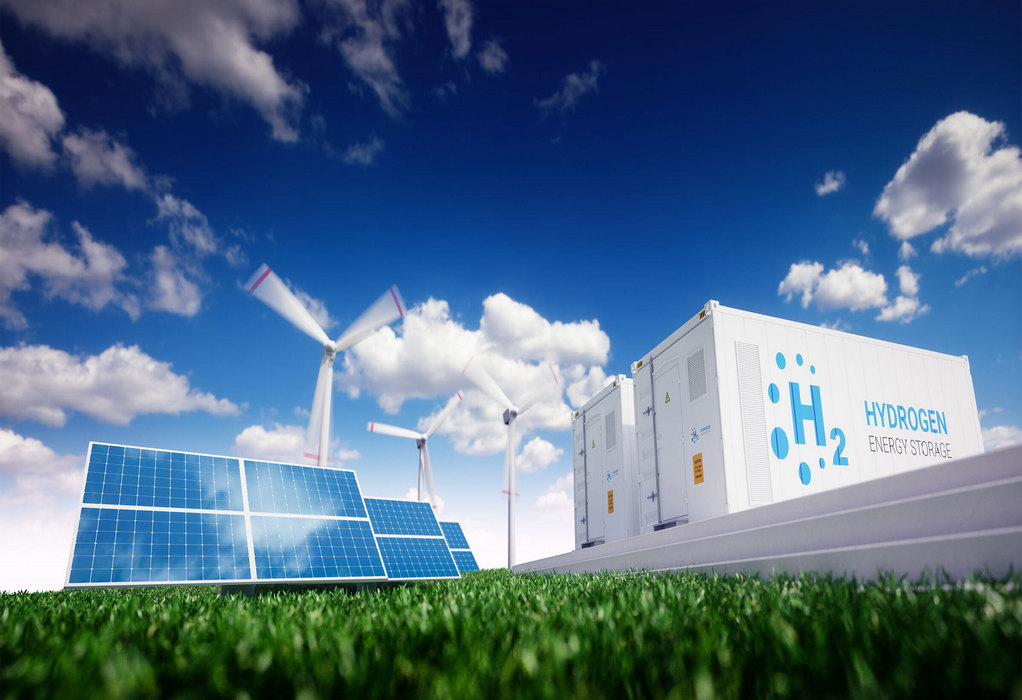Hydrofuel’s licensing of Micro Ammonia Production System (MAPS) from Georgia Tech to combine with its Kontak Hydrogen from Ammonia Separation Modules.
Hydrofuel Canada Inc. a company engaged in delivering Green Ammonia and Hydrogen along the last mile to its customers, has completed an exclusive licence agreement with Georgia Institute of Technology for their patent pending MAPS system which enables high-yield, sustainable ammonia synthesis from air and water with unprecedented efficiency using a gas-phase electrochemical process.
Utilizing MAPS technology with renewable energy to produce cost effective green ammonia is a major development. Using that ammonia with Kontak’s technology, which Hydrofuel has previously acquired, is a game changer.
Combined, these technologies allow Hydrofuel to produce Green NH3 using $.02/kWh electricity for as low as $220 a tonne, whereas fossil-fuel derived NH3 is currently selling at $1,500 to $2,000 a tonne.
Green Hydrogen can be separated out from this ammonia to sell at about $1.50 a kg, compared to traditional green H2 which sells for up to $15 a kg. Even at $.08/kWh the production of green Ammonia and releasing Hydrogen from it will be lower cost than any hydrocarbon fuel.
The MAPS ammonia production technology uses hollow hybrid plasmonic nanocages to create a highly effective electrocatalyst for ammonia synthesis from nitrogen (N2) and electrolyzed water (H2O) under ambient temperatures and pressure in the gas- and liquid-phase system.
Ammonia is a significant energy carrier and is an essential ingredient in fertilizer production, globally. Georgia Tech researchers have developed a sustainable and environmentally friendly production method that enables a high ammonia yield rate with unprecedented energy efficiency.
Ammonia (NH3) molecules contain one part nitrogen, and three parts hydrogen. NH3 is a promising and environmentally friendly fuel source because it is carbon free, it contains 1.5 times more hydrogen than liquid hydrogen (H2), and it can reduce global GHG emissions substantially by displacing fossil fuels.
Storing hydrogen energy in ammonia is more efficient than pure hydrogen as it doesn’t leak through the walls of containers and pipelines. The atomic the weight of the fuel makes it a perfect carrier of hydrogen for commuter, eVTOL, drone, and regular aircraft travel, as well as for marine, transport truck, agricultural and industrial and power generation uses.
The MAPS technology can decentralize the production of ammonia and hydrogen while it consumes significantly less energy than current methods, permitting local or on-site production with renewable electricity sources and long-term energy storage.
Hydrofuel and MAPs co-inventor Reza Nazemi are negotiating an agreement with Colorado State University to complete a commercial application and demonstration of the MAPS technology, commencing in July of 2022.
Benefits/Advantages of MAPs Technology
Simplified process: Enables production of ammonia via gas-phase system with few or no additional steps for separation and purification
Reduced carbon footprint: Enables decentralized production so that farmers can make their own fertilizer on site, eliminating the need to transport it
Long-term energy storage: Stored renewable energy in the form of liquid ammonia containing hydrogen that can easily be transported and delivered to end-users for various applications in the energy and transportation industries (e.g., power, combined heating
Kontak’s technology can efficiently release hydrogen from a dozen potential carrier molecules identified so far. Of the carriers, the highest storage capacity is anhydrous ammonia, with (17.3% hydrogen by weight) stored in liquid form like propane.
Kontak’s patented reactor is the most effective method to date for releasing hydrogen. The hydrogen is filtered and sent directly to a fuel cell or internal combustion engine. The technology was developed under a National Science Foundation Grant. The Hydrogen Release Module is USPTO #10,207,241B2 with patents pending in multiple countries.
Kontak also has patents pending on a modular low-cost combined hydrogen, ammonia, and battery energy station technology that can store as much as three times the energy of conventional systems.
Hydrofuel’s Ammonia Solutions© aftermarket multi-fuels engine retrofit systems will be used for a low emission combination of diesel and ammonia fuel, and zero emission hydrogen oxygen assisted NH3 fuel.
Toronto, Ontario-based TFX International SPECIALIZED VEHICLE TRANSPORT will provide two diesel fuelled generators and transport trucks to be converted to use Hydrofuel® ammonia/hydrogen fuel over three years, beginning in 2023.
Source: https://hydrogen-central.com/
Tags: Georgia Tech, Green Ammonia, Green Hydrogen, Hydrofuel Canada, MAPS



Recent Posts
Seafarer Wellbeing Highlighted in New Decarbonisation Guidance from ISWAN
India Outlines Green Hydrogen Strategy at World Hydrogen Summit 2025 in Rotterdam
Port of Rotterdam and EDGE Navigation Partner to Advance Liquid Hydrogen Infrastructure
Finnlines Launches Low-Carbon “Green Lane” Sea Transport Service with Up to 90% Emission Cuts
Microsoft Teams Up with NORDEN to Cut Maritime Supply Chain Emissions
Höegh Autoliners’ Fifth Aurora-Class PCTC Enters Service with Multi-Fuel Capability
Next-Gen Marine Propulsion: MAN Launches Methanol Super Engine
Port of Amsterdam Marks First Ship-to-Ship Methanol Bunkering